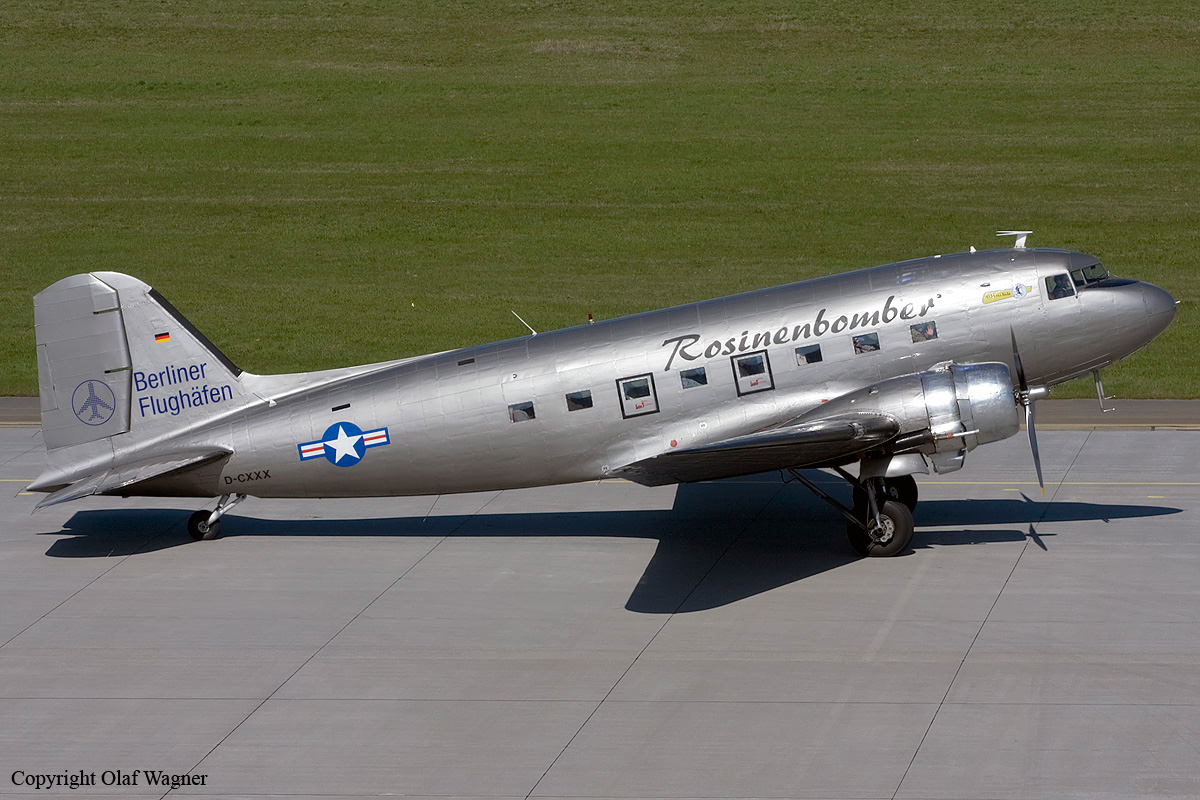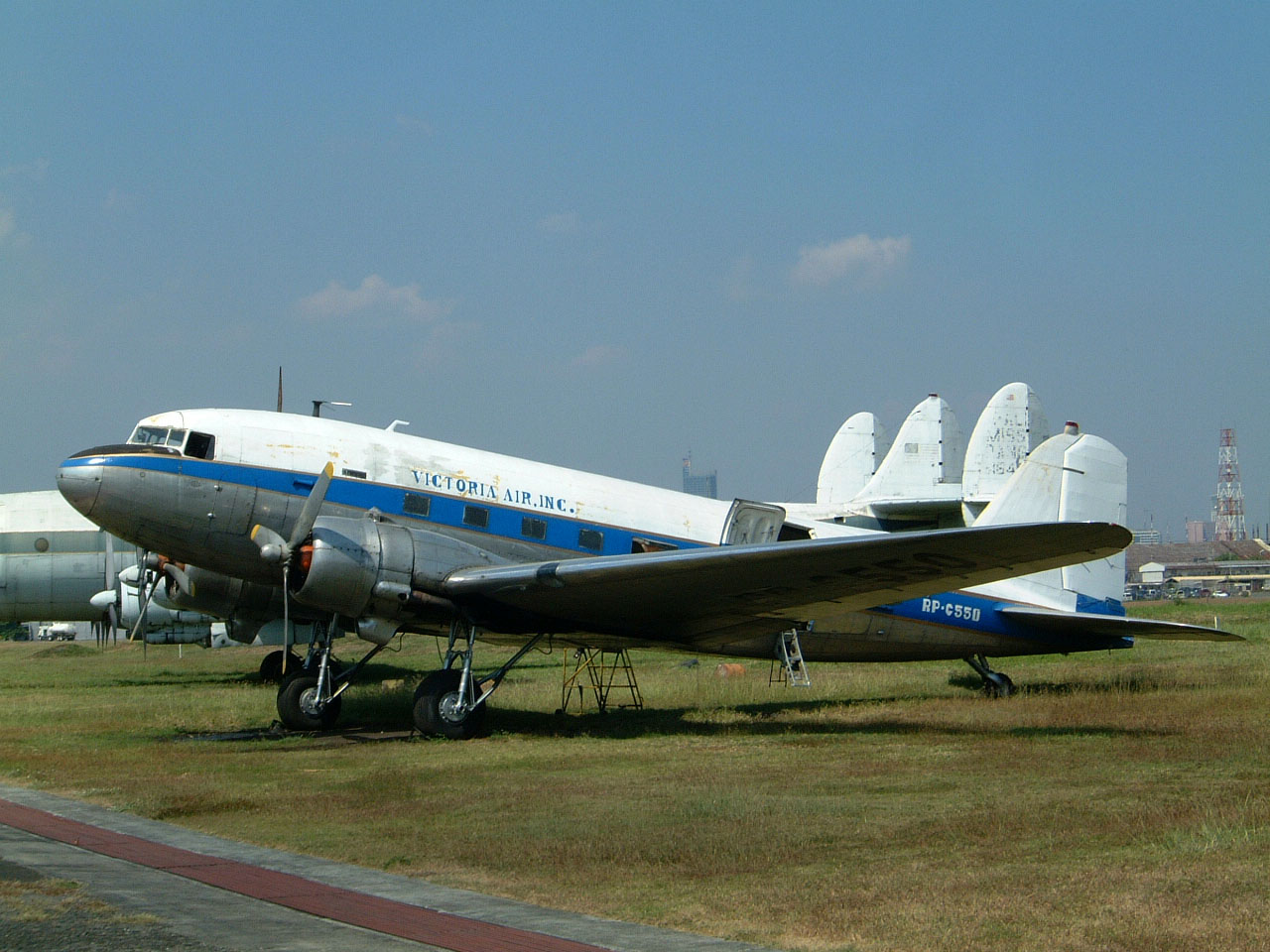Country
Crash of a Douglas DC-3C in Berlin
Date & Time:
Jun 19, 2010 at 1447 LT
Registration:
D-CXXX
Survivors:
Yes
Schedule:
Berlin - Berlin
MSN:
16124/32872
YOM:
1944
Crew on board:
3
Crew fatalities:
Pax on board:
25
Pax fatalities:
Other fatalities:
Total fatalities:
0
Circumstances:
The aircraft departed Berlin-Schönefeld Airport on a local 35-minute sightseeing flight over Berlin with 25 passengers and three crew members on board. Shortly after takeoff, while in initial climb, the pilots encountered technical problems with the right engine and elected to make an emergency landing. The aircraft struck the airport boundary fence then crash landed on its belly with its right wing partially torn off. All 28 occupants escaped uninjured while the aircraft was damaged beyond repair.
Probable cause:
Loss of power on the right engine for unknown reasons.



Crash of a Douglas DC-3C in Manila: 4 killed
Date & Time:
Oct 17, 2009 at 1214 LT
Registration:
RP-C550
Survivors:
No
Schedule:
Manila - Puerto Princesa
MSN:
14292/25737
YOM:
1944
Crew on board:
3
Crew fatalities:
Pax on board:
1
Pax fatalities:
Other fatalities:
Total fatalities:
4
Circumstances:
On October 17, 2009at about 12:04 pm, RP-C550 a DC-3type of aircraft took off from Manila Domestic airport bound for Puerto Princesa, Palawan. Approximately 5 mins after airborne, the Pilot-in-Command (PIC) informed Manila Tower that they were turning back due to technical problem. The PIC was asked by the air controller whether he was declaring an “emergency” and the response was negative. The PIC was directed to proceed South Mall and wait for further instruction (a standard procedures for VFR arrivals for runway 13). At South Mall, RP-C550 was cleared to cross the end of runway 06, still without declaring an emergency. The tower controller sensed that something was wrong with the aircraft due to its very low altitude, immediately granted clearance to land runway 06. However, the aircraft was not able to make it to runway 06. At about 12:14, RP-C550 crashed at an abandoned warehouse in Villa Fidela Subd., Brgy. Elias Aldana Las Piñas City about 4 kms. from the threshold of runway 06. As a result, the aircraft was totally destroyed and all aboard suffered fatal injuries due to impact and post crash fire.
Probable cause:
The Aircraft Accident Investigation and Inquiry Board determine that the probable causes of this accident were the following:
- Non-procedural application of power during take-off and initial climb that led to left engine malfunction.
- The questionable qualifications of the flight crew.
- Low level of competence of the pilots.
- Not feathering the left engine.
- Turning towards the bad engine.
- Not declaring an emergency.
- Non-procedural application of power during take-off and initial climb that led to left engine malfunction.
- The questionable qualifications of the flight crew.
- Low level of competence of the pilots.
- Not feathering the left engine.
- Turning towards the bad engine.
- Not declaring an emergency.
Final Report:

Ground fire of a Douglas DC-3C in San Juan
Date & Time:
Apr 26, 2009 at 0428 LT
Registration:
N136FS
Survivors:
Yes
Schedule:
San Juan - Charlotte Amalie
MSN:
10267
YOM:
1943
Crew on board:
2
Crew fatalities:
Pax on board:
2
Pax fatalities:
Other fatalities:
Total fatalities:
0
Captain / Total hours on type:
7000.00
Copilot / Total hours on type:
204
Aircraft flight hours:
19952
Circumstances:
During taxi to a runway, the instrument panel and cockpit floor erupted in flames. Examination of the wreckage revealed that the majority of the wires contained inside the main junction box had very little damage except for two wires that had insulation missing. The damage appeared to be associated with the routing of the two wires. Both wires were connected to the battery relay and ran through wires in and around the exposed terminal studs. Heat damage was noted on the insulation of wires and other components that were in contact with the exposed wires. The wires ran from the battery relay to the forward section of the cockpit, where the fire started. Due to the fire damage that consumed the cockpit, the examination was unable to determine what system the wires were associated with. Further examination revealed that the fuel pressure was a direct indicating system. Fuel traveled directly to the instruments in the cockpit via rigid aluminum lines routed on the right lower side of the fuselage, where more severe fire damage was noted. Review of maintenance records did not reveal any evidence of the fuel pressure indicating system lines and hoses having ever been replaced; however, they were only required to be replaced on an as-needed basis. The electrical system, instrument lines, and hoses through the nose compartment were required to be inspected on a Phase D inspection; the airplane's last Phase D inspection was completed about 9 months prior to the accident and the airplane had accrued 313.1 hours of operation since that inspection.
Probable cause:
Worn electrical wires and a fuel pressure indicating system hose, which resulted in a ground fire during taxi.
Final Report:





